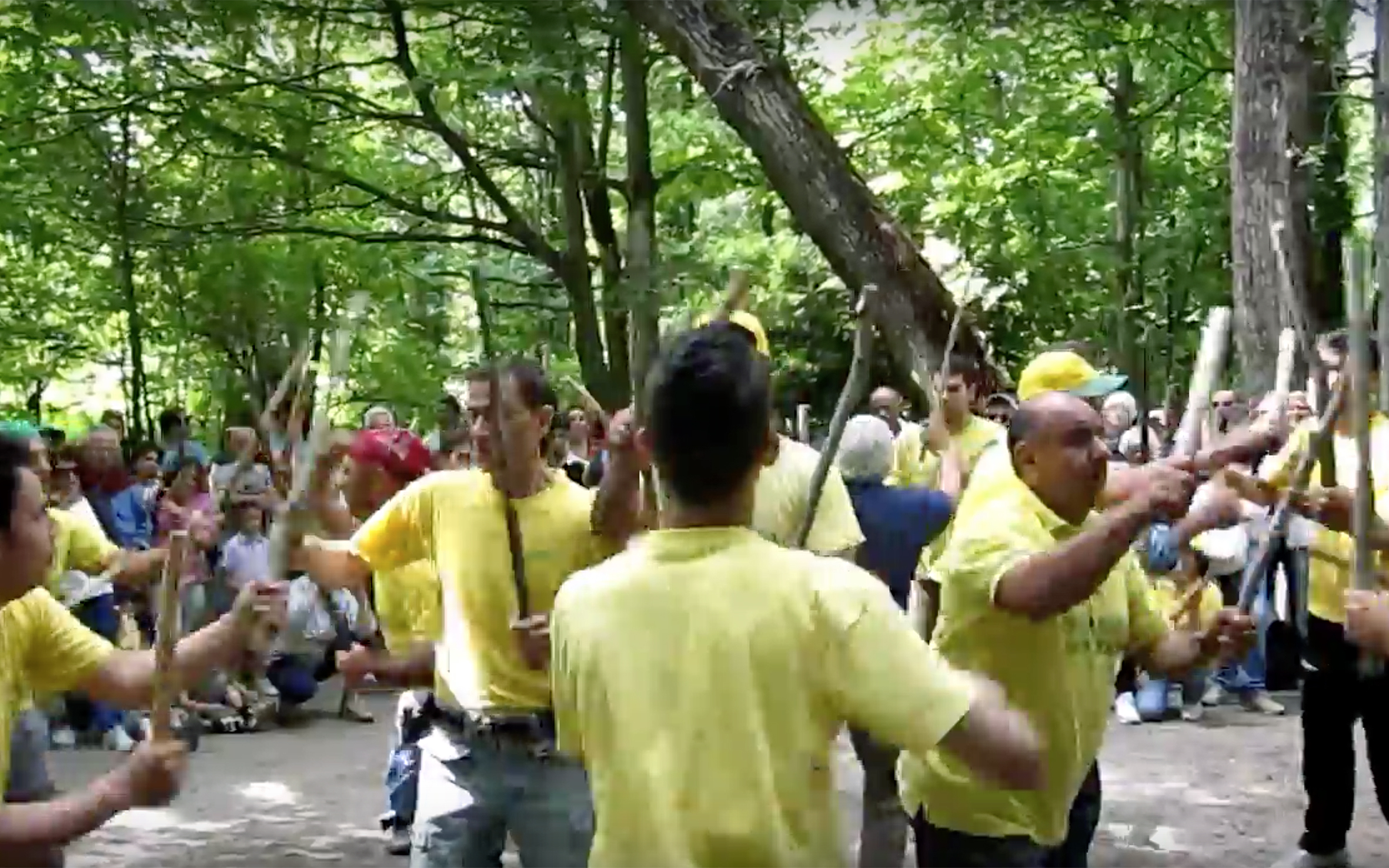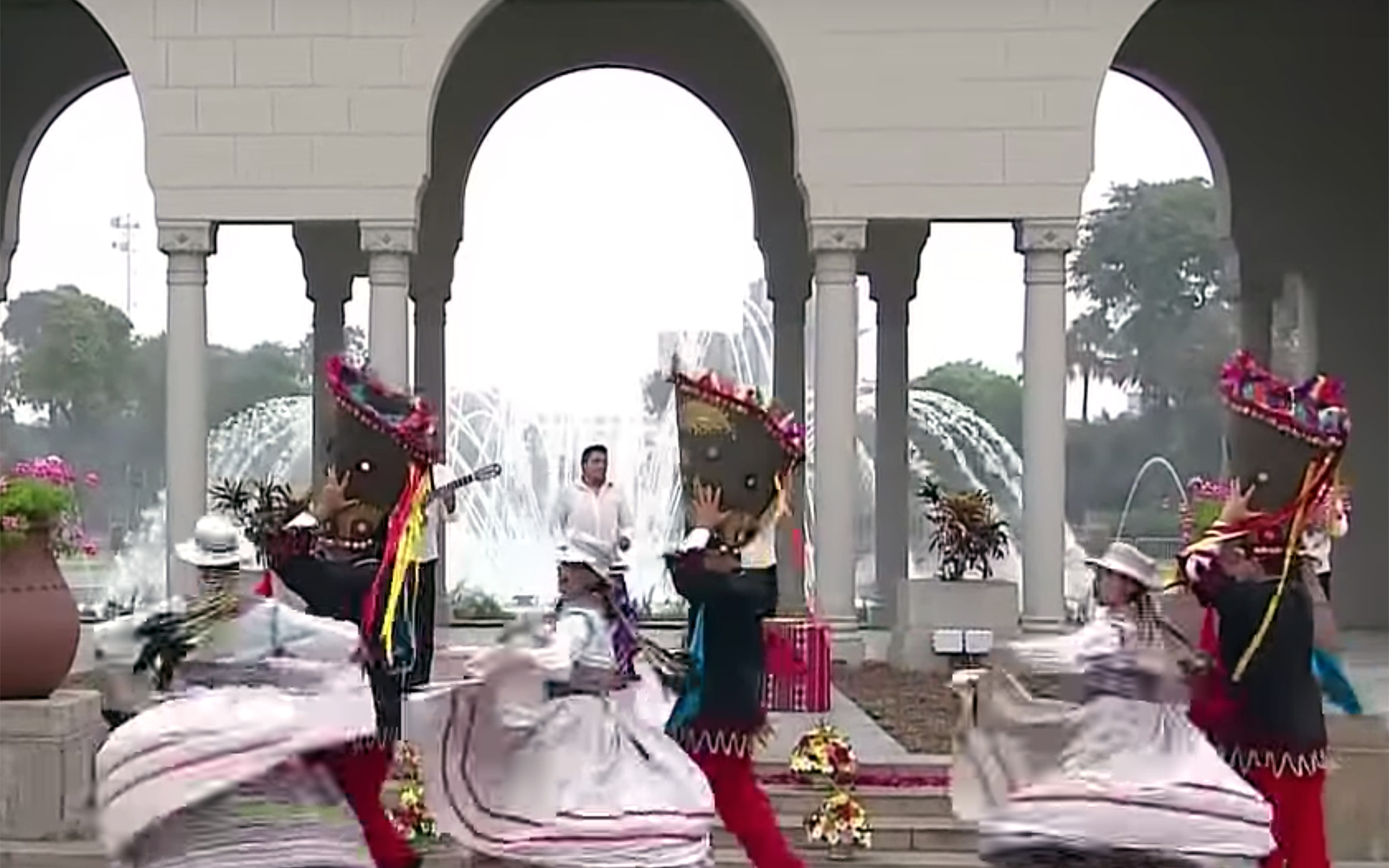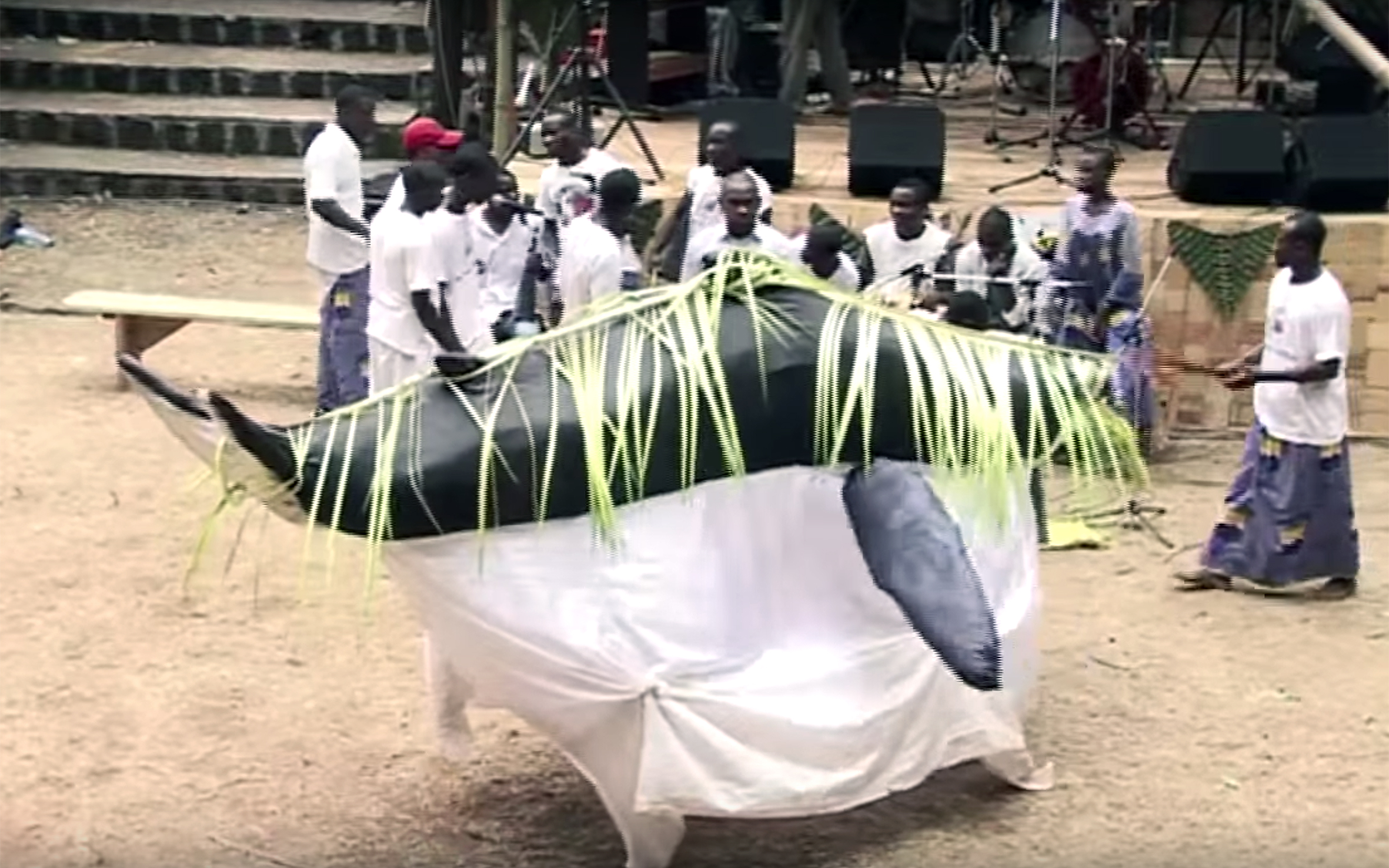632.Namastap / Namibia
NAMASTAP is a traditional dance of the Nama people from Namibia. It is considered an important part of their identity and performed on various occasions, including social gatherings, weddings and birthday parties. Typically, it is accompanied by guitar and accordion. The dance involves forward and backward movements through space, with feet maintaining a close proximity. When the foot is moved away from the central axis, instead of lifting it from the ground, a sliding movement is performed. During the dance, the participants slide step past each other and also step in one place.
633.Ndlamo / Lesotho
NDLAMO is a traditional dance from Lesotho that is performed by men or boys. It is similar to Indlamu, a Zulu dance from South Africa, in which the dancer lifts one foot over the head and brings it down hard, landing squarely on the downbeat.
634.Ndombolo / Congo
NDOMBOLO is a Congolese music genre and dance style, also popular in other African countries such as Kenya and Madagascar. It derives from Kwassa Kwassa, a dance/music subgenre of Soukous. Ndombolo dance involves energetic hip-swinging and fast-paced steps. Its common moves include rapid arm movements, twists, and turns. The dance has come under criticism on claims that it is obscene. There have been attempts to ban it in Mali, Cameroon, Kenya and Congo, but this has only made it even more popular.
635.NDREZZATA / Italy
NDREZZATA is a dance coming from Buonopane, a part of the commune of Barano d’Ischia, on the island of Ischia. Its name comes from the word “intrecciata”, meaning “braid”. It was brought by migrants to both Americas— first to New York, where it was danced on the streets in 1916 and 1917, and later to Buenos Aires in 1924. In its classic form, it has 16 dancers, with men and women taking an equal part in the dance. It is accompanied by drums, flute, and singing. The men carry a small stick in their right hand and a wooden sword in the left, the women reverse this. The dance has two parts, with seven tableaus in each part, and consists of crossing and interlacing of blows of the sticks and swords.
636.Negrillos DANCE / Peru
NEGRILLOS is a Peruvian folk dance performed in the Arequipa region. In its traditional form, it represents the black people, who after the abolition of slavery, began to become independent by working in agriculture, animal husbandry, fishing and sale of bread products. It features men wearing large, ornamented cone-shaped hats, which symbolizes how the black people carried on their heads baskets containing products for sale, as they had been taught by their ancestors. The dance is performed particularly during various traditional celebrations in the region.
637.Nepalese boys dancing / Qatar
NEPALESE BOYS DANCING present dances performed by Nepalese boys living in Qatar. Qatar became famous for holding the FIFA World Cup 2022, but it also became controversial due to its policies of recruiting people to build the stadiums where the World Cup will be held. Most of the construction workforce comes from Nepal. These Nepalese boys dancing give an insight into cultural transformations taking place in the Middle East and its challenges.
638.Nestinarstvo / Bulgaria
NESTINARSTVO is a traditional barefoot fire-walking ritual with ecstatic dance performed in some villages in Northern Greece and Southern Bulgaria. It is usually performed on the square of the village in front of the whole community on the day of Saint Constantine and Saint Helen or on the day of the saint patron of the village. Each of the festivals lasts for 3 days and involves various processions, music and dancing, and an animal sacrifice. The festival culminates with a firewalking ritual, where the participants, carrying the icons of saints Constantine and Helen, dance ecstatically for hours before entering the fire and walking barefoot over the glowing-red coals, unharmed by the fire. The ritual is a unique mixture of Eastern Orthodox beliefs and older pagan traditions from the Strandzha Mountains.
639.NGI / Cameroon
NGI is a traditional dance from northwestern Cameroon.
640.NGOSSO Whale / Cameroon
NGOSSO WHALE is a dance from southwestern Cameroon.
641.NGOZE / Gabon
NGOZE is one of the main rituals of the syncretic religion called Bwiti, practiced especially in Gabon in Central Africa. Typically, it lasts three consecutive nights, and involves ingesting the hallucinogenic plant iboga, singing and dancing. The participants are usually dressed in different colors, and their faces are painted with white kaolin. The dances are long and exhaustive, and guided by precise choreographic schemes. One of the most common dances is a long line of people, with each person repeating the movement of the person in front, which originates with the first dancer and moves down the line to the last one. This is performed to the rhythm of several musical instruments: the musical bow, drums and other percussion instruments, and during the second part of the night, the sacred harp (ngombi).
642.Nifara / Mauritania
NIFARA is a traditional Mauritanian flute, very important for the local culture. Dancing to it gained popularity amongst young Mauritanians. They use their skills to match the melodies and dance expressively in a theatrical style. As the enthusiasm in the audience grows, they ululate and clap.
643.Nightlife: Circuit Parties, Clubs, Drag / Global
NIGHTLIFE has long been an escape for queer people, a place where costumes, music, dance, drugs and freedom reign. The nightlife culture was heavily influenced by the “Club Kids” scene of the 1980s and 1990s that housed a large majority of queer and trans folks. Among important elements of the nightlife associated with the LGBTQ communities are circuit parties as well as drag parties, performances, and competitions. Dance has always been an integral part in the nightlife culture of these communities.
644. NIUEAN TRADITIONAL DANCE / Niue
NIUEAN TRADITIONAL DANCE comes from the Niue Island, a small island in the South Pacific Ocean, one of the world’s largest coral islands and smallest self-governing states. The culture and tradition of Niue is rich in music, with many traditional songs sung without musical accompaniment. Traditional dances and songs are featured at important events such as official ceremonies and weddings. The only instrument that is used for traditional dances is a wooden drum known in Niuean as “palau” or “nafa”, made out of a carved trunk of the selie tree. It provides the beat for the dances. The dance of celebration, e.g. for the opening of a new building, weddings, or birthdays—known as Tame— is accompanied by guitars, ukuleles, musical keyboard and singing.
645.Non-dance / Global
NON-DANCE is a choreographic movement within contemporary dance. It began in the 1990s, mainly in France. Its practitioners focus on creating pieces in which traditional dance movement is integrated or substituted with activities and techniques of other performing arts (theatre, video, lectures, music, plastic arts etc.). One of the leading figures of the nondance genre is Jérôme Bel, French dancer and choreographer, whose characteristic choreographic style is typified by his 2001 piece “The Show Must Go On”.
646.Northern Soul / England
NORTHERN SOUL is a music and dance movement that emerged in Northern England in the late 1960s from the British mod scene. It is based on a particular style of black American soul music, especially in the mid- 1960s, with a heavy beat and fast tempo. As the favoured beat became more uptempo and more frantic in the early 1970s, northern soul dancing became more athletic, somewhat resembling the later dance styles of disco and break dancing.
647.Nubian dancing / Egypt / Sudan
NUBIAN DANCES are traditional folk dances performed by the Nubian people, who are indigenous to the region which is now present-day northern Sudan and southern Egypt. Nubian villages are known for the abundance of dance and celebrations. The dances vary in style, but are typically performed in groups, usually of the same sex or age, with the participants mostly doing the same movements. Dancing is accompanied by singing, hand clapping, and various traditional instruments such as tanbu¯ra (lyre) and bendir (frame drum).
648.NYAU DANCE / Zambia
NYAU DANCE are traditional ritual dances of the Nyau, a secret society of the Chewa, an ethnic group of the Bantu peoples from Central and Southern Africa. The society consists of initiated members who follow the Nyau belief system. Initiations are separate for men and women, with different knowledge learned and different ritual roles in the society according to gender and seniority. The Nyau dances are performed in masks and involve intricate footwork that flings dust into the air. The dancers respond to specific drumbeats and chants, depending on the mask and thus the character they represent: the spirit of a dead person, a human being or an animal. The main function of the dances is to communicate with the world of the ancestors. Gule Wamkulu is the best known and longest of the Nyau dances.

















